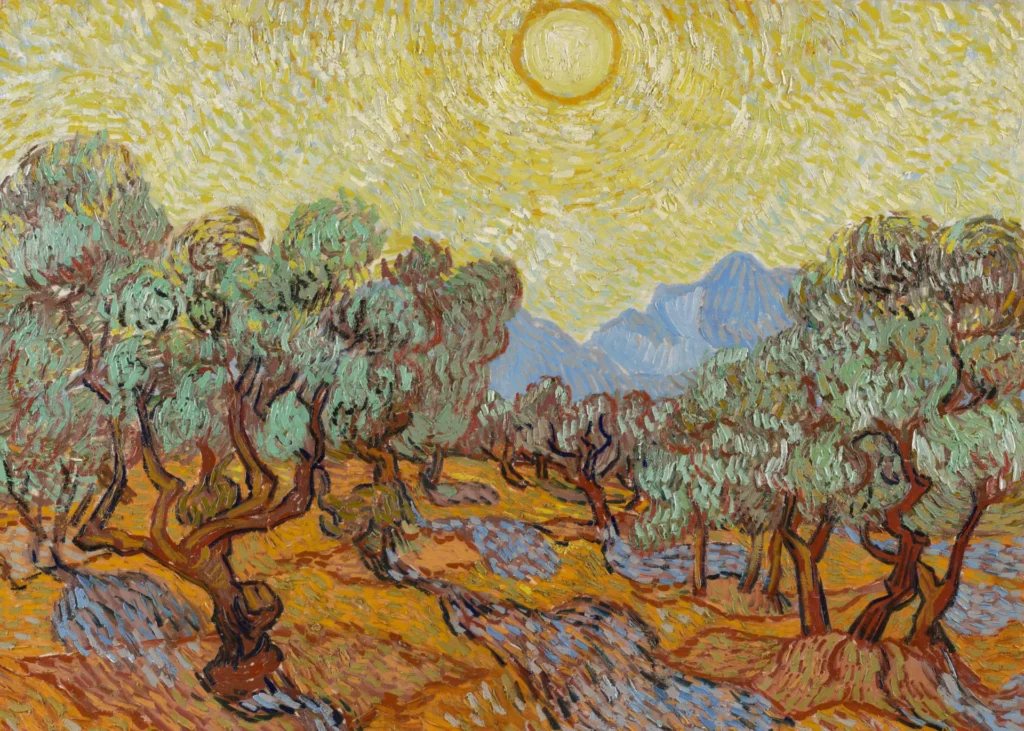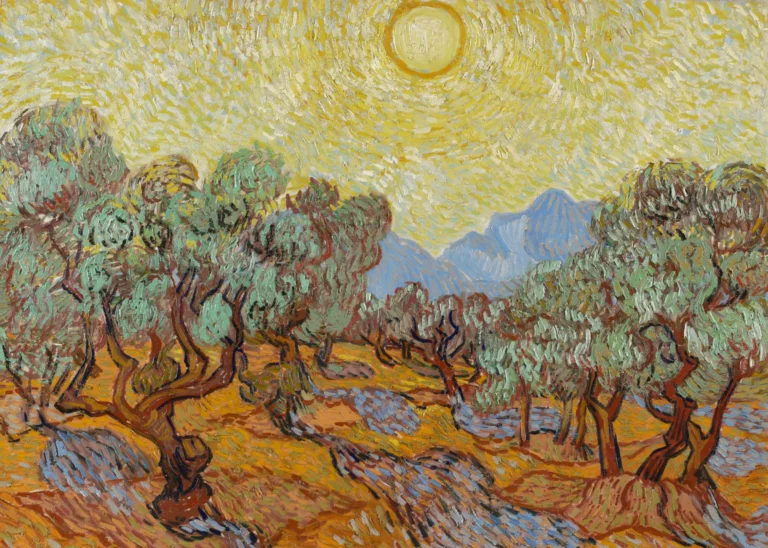Olive Trees (1889)
The Olive Trees series by Vincent van Gogh, painted in 1889, captures the artist's intricate relationship with nature during a tumultuous time in his life. Set against the backdrop of the olive groves near the asylum of Saint-Paul-de-Mausole, these works are characterized by bold color choices and dynamic brushwork. This series illustrates not only Van Gogh's technical mastery but also the spiritual and emotional depths he explored through the motif of olive trees, which represented life, divinity, and solace amidst his struggles with mental health.
Year 1889
About the Artwork
In 1889, Vincent van Gogh sought refuge at the Asylum of Saint-Paul-de-Mausole in Saint-Rémy, France, grappling with profound mental health issues. It was during this challenging period that he produced an impressive series of paintings focusing on olive trees, with nearly 15 canvases depicting these subjects. The olive trees became a source of inspiration and solace for Van Gogh, as he found comfort among the natural surroundings. His expressive brushwork and vibrant color palette reflected his emotional state and his desire to convey the spiritual essence of nature. Each painting serves as a powerful testimony to his inner conflict and the beauty he found in the world around him. One standout work from this series is "The Olive Trees," which features twisted trunks and a serene Mediterranean landscape, showcasing not only the physical beauty of the trees but also their deeper meanings as symbols of life and spirituality.
Did You Know
Liked what you see? Add it to your collection.
Enjoyed reading? Share it.
... continued
Creation and Context
Van Gogh painted at least 15 canvases of olive trees during his time at the asylum in 1889. This period was marked by his struggles with mental illness and emotional turmoil, yet these paintings are considered some of his finest works.
Artistic Style and Technique
The paintings are characterized by their expressive brushwork and vibrant colors. Van Gogh used long, curving brushstrokes and a palette that included blues, greens, yellows, and oranges to capture the dynamic and alive quality of the olive trees. The brushstrokes and color choices were intended to convey the spiritual and emotional force he found in nature.
Symbolism and Meaning
Olive trees held special significance for Van Gogh. They represented life, the divine, and the cycle of life. Some paintings from May 1889 symbolized life and the divine, while those from November 1889 were influenced by the story of Christ in Gethsemane. The trees were seen as a manifestation of the spiritual force residing in all of nature.
Emotional and Spiritual Significance
Van Gogh found comfort and strength in nature, particularly in the olive groves surrounding the asylum. He described the murmur of an olive grove as having "something very intimate, immensely old about it." The intense nature of these paintings, such as the one held by the National Gallery of Scotland, reflects Van Gogh's agitated state of mind during this period.
Specific Works
One of the notable works from this series is "The Olive Trees" held by the Museum of Modern Art in New York, painted in June-July 1889. This painting features twisted olive trees against a backdrop of rolling hills and a light-washed sky, capturing the energy and life of the Mediterranean landscape.










